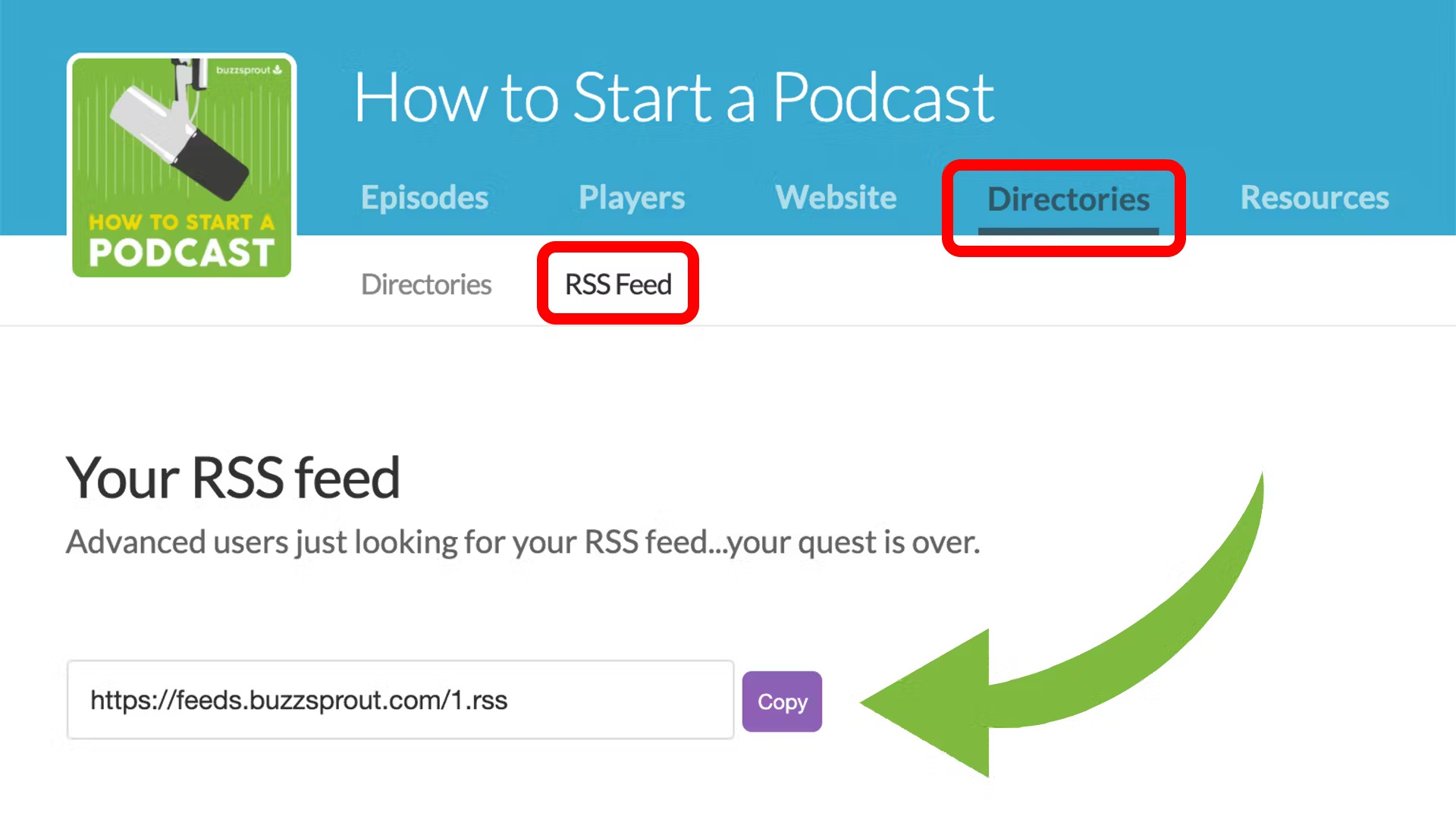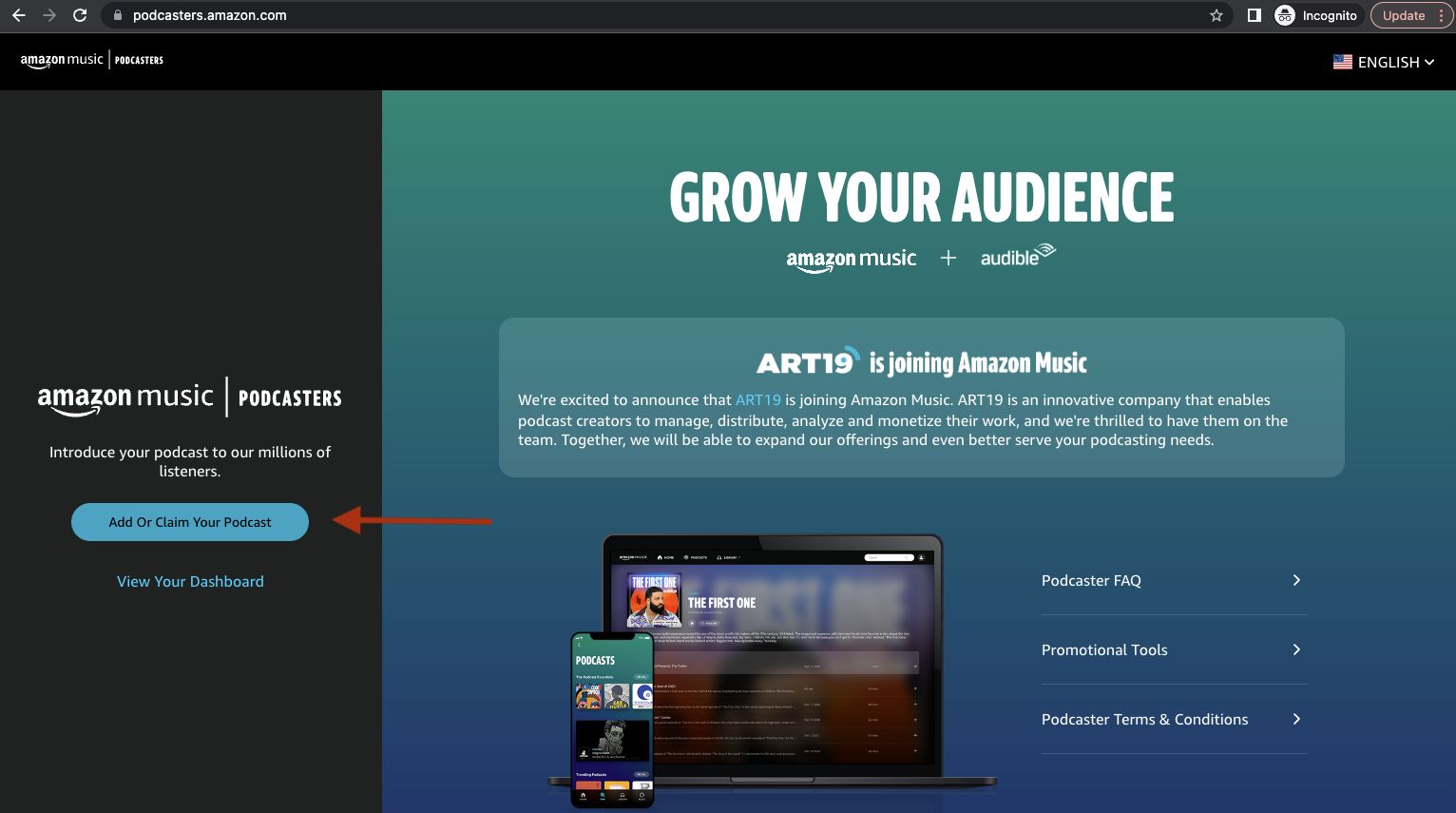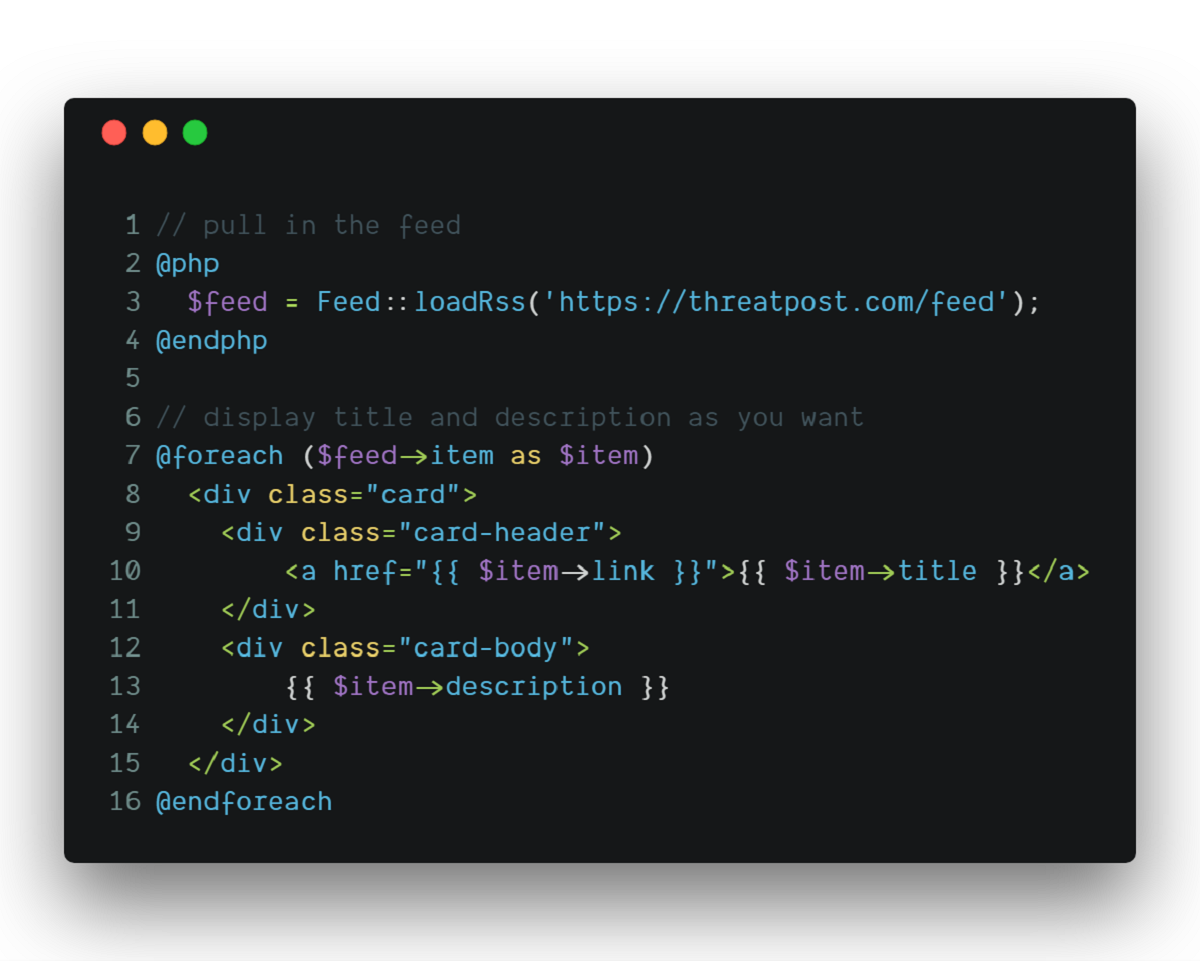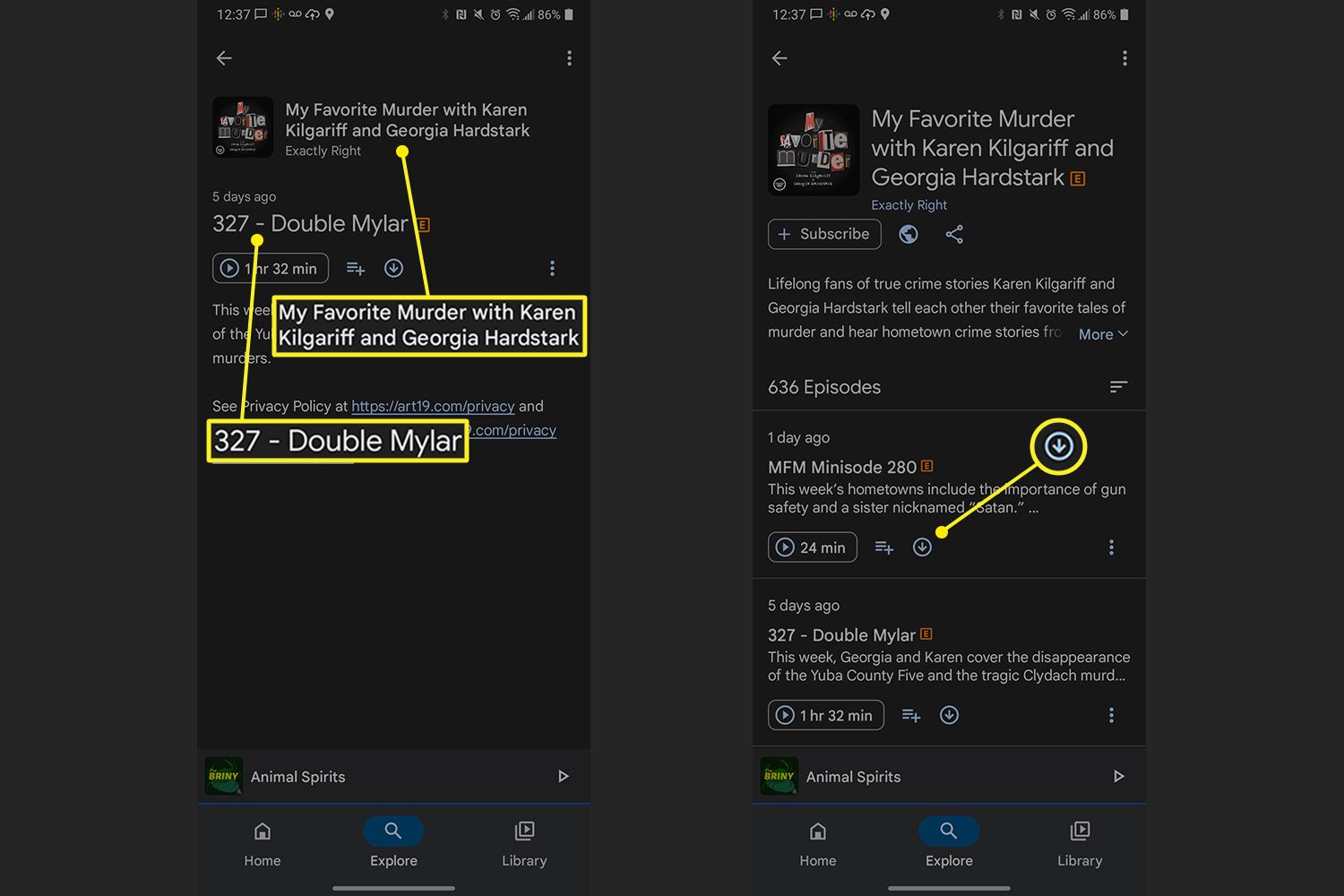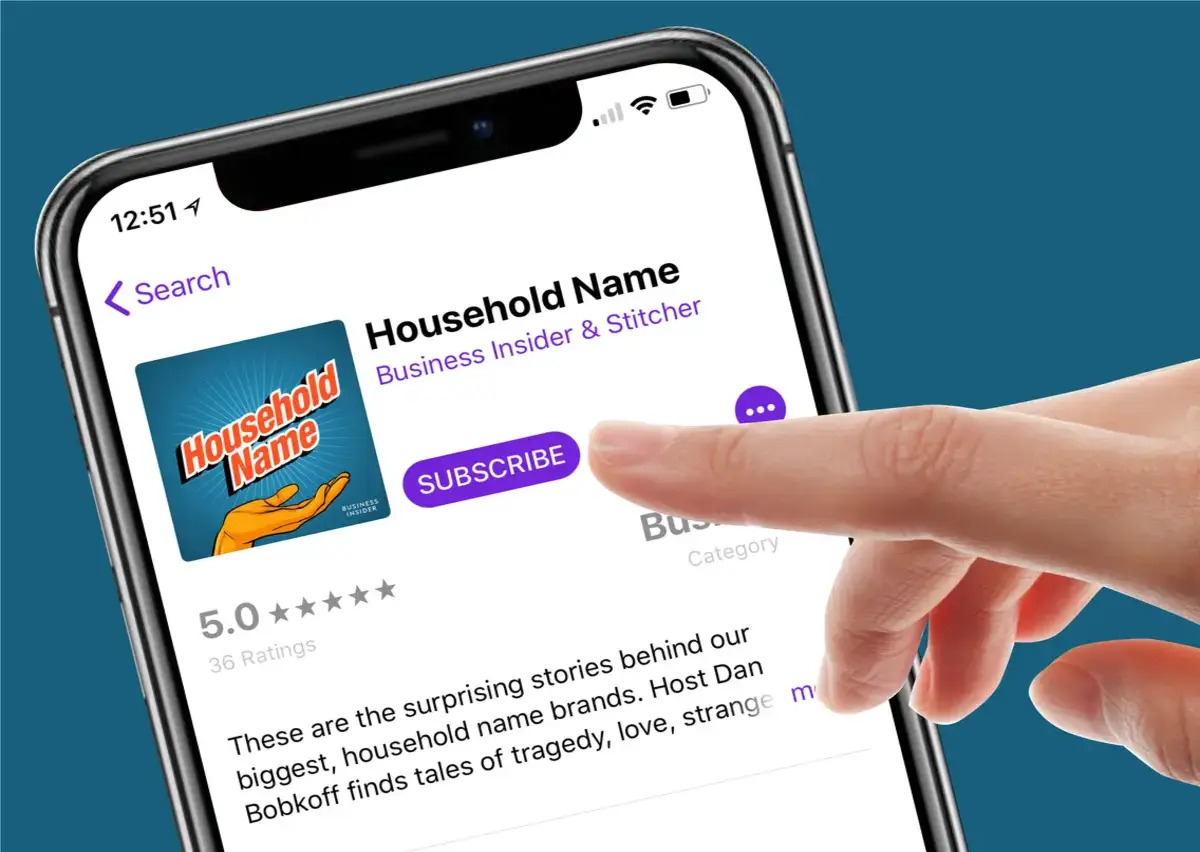Introduction
Welcome to the world of podcasting! As a podcast creator, you know that creating engaging content is just one piece of the puzzle. To ensure your podcast reaches its intended audience, you need to optimize your podcast for search engines and podcast directories. This is where a podcast RSS feed plays a crucial role.
A podcast RSS feed is an XML file that contains information about your podcast, including the title, description, episode titles, and URLs. This feed allows podcast directories and apps to automatically fetch and display your podcast episodes to listeners. It acts as a central hub to distribute your content and make it accessible to a wider audience.
But why is a podcast RSS feed so important? In the ever-growing world of podcasts, standing out and reaching your target audience can be challenging. Having a well-optimized RSS feed increases the chances of your podcast being discovered by potential listeners.
In this article, we will guide you through the process of creating and optimizing a podcast RSS feed. From selecting a podcast hosting platform to submitting your RSS feed to directories, we’ll cover all the essential steps to help you get started. Let’s dive in!
What is a Podcast RSS Feed?
If you’re new to podcasting, you may be wondering what exactly a podcast RSS feed is. Simply put, an RSS (Really Simple Syndication) feed is a format used to collect and distribute up-to-date web content, such as blog posts, news articles, and, in our case, podcast episodes.
A podcast RSS feed is a specialized type of RSS feed specifically designed for podcasts. It acts as a bridge between your podcast hosting platform and podcast directories, allowing your episodes to be automatically updated and showcased to listeners.
Think of your podcast RSS feed as a catalog that contains all the necessary information about your podcast. It includes key details like the title and description of your podcast, episode titles and descriptions, publication dates, artwork, and the URLs where your episodes can be accessed.
Whenever you create a new episode or make changes to your podcast, your hosting platform updates the RSS feed to reflect those updates. Podcast directories, such as Apple Podcasts, Spotify, and Google Podcasts, regularly check the RSS feed to discover and display new episodes.
By using a podcast RSS feed, you can ensure that your podcast content remains readily available to podcast directories and apps. These platforms rely on the feed to fetch and display your episodes, making it easy for listeners to find and access your content.
In addition to distributing your podcast, an RSS feed also enables podcast directories to track important data about your episodes, such as the number of downloads and plays. This information plays a vital role in understanding your audience and measuring the success of your podcast.
Overall, a podcast RSS feed acts as a fundamental component in the podcasting ecosystem. It allows your podcast to be discovered, accessed, and tracked, making it essential for every podcast creator to understand and optimize.
Why is a Podcast RSS Feed Important?
Now that you have a basic understanding of what a podcast RSS feed is, let’s explore why it is such a crucial element in the world of podcasting.
1. Automatic Distribution: A podcast RSS feed serves as the backbone for distributing your podcast to various podcast directories and apps. By simply updating your RSS feed with new episodes, you can instantly make your content available to a wide range of platforms, including popular ones like Apple Podcasts, Spotify, and Google Podcasts. This automated distribution saves you valuable time and effort, allowing you to focus on creating engaging content.
2. Broader Audience Reach: Utilizing a podcast RSS feed increases the discoverability of your podcast. Podcast directories rely on RSS feeds to fetch and display episodes to their users. By optimizing your RSS feed with relevant keywords and information, you enhance the chances of your podcast appearing in search results and gaining exposure to potential listeners who may be interested in your content.
3. Real-Time Updates: With a podcast RSS feed, your audience can receive real-time updates whenever a new episode is released. Without an RSS feed, listeners would have to manually visit your website or social media platforms to check for updates. The ability to automatically deliver new episodes to your audience keeps them engaged and encourages regular listenership.
4. Analytics and Insights: Podcast directories use your RSS feed to track important metrics related to your podcast’s performance. This includes the number of downloads, plays, and subscribers. Accessing these analytics through your hosting platform or podcast directories provides valuable insights into your audience’s behavior, preferences, and engagement levels. This data can help you tailor your content and make informed decisions to grow your podcast.
5. Integration with Podcast Apps: By utilizing an RSS feed, your podcast can be seamlessly integrated into various podcast apps. This allows users to easily subscribe, download, and listen to your episodes on their preferred platform. This convenience increases the chances of users becoming dedicated listeners and sharing your podcast with others.
In summary, a podcast RSS feed is a vital component of podcasting that enables automatic distribution, improves discoverability, provides real-time updates, offers valuable analytics, and integrates with podcast apps. By understanding the importance of an RSS feed and optimizing it effectively, you can maximize the reach and impact of your podcast.
Step 1: Choosing a Podcast Hosting Platform
Selecting the right podcast hosting platform is the first crucial step in creating and managing your podcast. A podcast hosting platform is a service that stores and distributes your podcast episodes, generates your podcast RSS feed, and provides analytics and other essential features. Here are some key factors to consider when choosing a podcast hosting platform:
1. Storage and Bandwidth: Consider the storage space and bandwidth offered by the hosting platform. Ensure it provides enough capacity to store your audio files and handle the expected number of downloads and streaming for your podcast episodes.
2. Customization and Branding: Look for a hosting platform that allows you to customize your podcast’s branding and display your artwork, logos, and episode descriptions in a visually appealing and professional manner.
3. Analytics and Reporting: Analytics are essential to track your podcast’s performance and understand your audience. Check if the hosting platform provides detailed analytics, such as download statistics, listener demographics, and engagement metrics.
4. Podcast Monetization: If you plan to monetize your podcast through sponsorships or advertisements, ensure that the hosting platform offers monetization options and provides adequate support for integrating ad networks.
5. Publishing Tools: Consider the ease of use and efficiency of the hosting platform’s publishing tools. Look for features such as episode scheduling, automated episode releases, and episode editing capabilities.
6. Integration with Podcast Directories: Verify that the hosting platform has seamless integration with popular podcast directories, such as Apple Podcasts, Spotify, and Google Podcasts. This will facilitate the automatic updating and distribution of your podcast episodes.
7. Support and Customer Service: It is important to have access to reliable support and assistance when needed. Research the hosting platform’s reputation for customer service and evaluate the level of support they offer.
Some popular podcast hosting platforms to consider include Libsyn, Podbean, Buzzsprout, and Anchor. Research and compare the features and pricing plans of each platform to determine which suits your specific needs and budget. Remember, your podcast hosting platform will play a significant role in managing and delivering your podcast episodes, so choose wisely.
Step 2: Creating a Podcast Episode
Now that you have your podcast hosting platform set up, it’s time to dive into the exciting process of creating a podcast episode. Here are the key steps to follow:
1. Plan Your Content: Start by brainstorming ideas for your podcast episode. Determine the topic, format, and structure of your episode. Consider whether you will have a solo episode, a guest interview, or a conversation with co-hosts. Planning your content in advance will ensure a smooth recording and help you deliver a cohesive and engaging episode.
2. Prepare an Outline or Script: Create an outline or script to guide your discussion. This will help you stay focused and organized during the recording process. Include key points, transitions, and any specific questions or prompts you want to address. While you don’t need to stick to the script word for word, having a structure in place will ensure a well-flowing conversation.
3. Set Up Your Recording Equipment: Find a quiet location and set up your recording equipment. Invest in a good quality microphone to ensure clear audio. Use headphones to monitor the sound while recording to catch any background noise or technical issues. Test your equipment before recording to ensure everything is working properly.
4. Record Your Podcast Episode: Press record and start recording your episode. Follow your prepared outline or script, but also allow for natural conversations and spontaneity. Speak clearly, enunciate your words, and maintain a steady pace. Remember to engage with your audience and keep them captivated throughout the episode.
5. Edit and Enhance Your Episode: After the recording, listen to the episode and edit out any mistakes, long pauses, or irrelevant content. Enhance the audio quality by adjusting levels, reducing background noise, and adding music or sound effects if desired. Editing software like Audacity, Adobe Audition, or GarageBand can help you refine the episode to achieve professional results.
6. Add Metadata and ID3 Tags: Before uploading your episode to your podcast hosting platform, add metadata such as the episode title, description, and relevant keywords. This information will be included in your RSS feed and help potential listeners discover your episode. Additionally, add ID3 tags to your audio file to provide details like the artist name, album, episode number, and artwork.
7. Save and Export Your Episode: Save the final edited episode in a high-quality audio format such as MP3 or WAV. Export it with the recommended settings for optimal sound quality and file size.
With these steps, you can create a well-crafted and engaging podcast episode. Remember to be authentic, have fun, and allow your unique personality to shine through. A great episode will leave your listeners eagerly anticipating the next one!
Step 3: Setting Up the Podcast RSS Feed
Setting up your podcast RSS feed is a crucial step in ensuring your podcast episodes are distributed correctly to podcast directories and apps. Follow these steps to set up your podcast RSS feed:
1. Create an Account and Podcast Profile: Sign up for a podcast hosting platform that generates an RSS feed for your podcast, such as Libsyn, Podbean, or Anchor. Set up your podcast profile by providing essential details like your podcast’s name, description, and artwork. These details will be included in your RSS feed.
2. Configure Your Podcast Settings: Customize your podcast settings within your hosting platform. Specify your podcast’s category, language, and any other relevant details. Ensure that your podcast’s settings align with the theme and target audience of your show.
3. Add Your Episodes: Upload your podcast episodes to your hosting platform. Include episode titles, descriptions, and URLs where each episode can be accessed. Make sure to follow best practices for episode metadata, including using relevant keywords to improve searchability.
4. Generate Your RSS Feed: Once your episodes are added, your podcast hosting platform will generate your podcast RSS feed automatically. This feed is a structured XML file that contains all the information about your podcast, including episode details, artwork, and URLs. Review your RSS feed to ensure accuracy and completeness.
5. Validate Your RSS Feed: Before submitting your RSS feed to podcast directories, ensure it is valid and error-free. Use online tools like W3C Feed Validation Service or Podcast Validator to validate your RSS feed. Fix any issues flagged during the validation process to ensure compatibility with podcast directories.
6. Get Your RSS Feed URL: Obtain the URL of your podcast RSS feed from your hosting platform. This URL will be used to submit your podcast to podcast directories, allowing them to fetch and display your episodes to their users.
7. Update and Promote: As you create new episodes, remember to update your RSS feed by adding the new episode details to your hosting platform. Promote your podcast by sharing your RSS feed URL on your website, social media platforms, and other relevant channels. This will help drive traffic and increase the visibility of your podcast.
By following these steps and ensuring the accuracy of your podcast RSS feed, you are setting the foundation for effectively distributing and promoting your podcast to a wider audience.
Step 4: Submitting the Podcast RSS Feed to Podcast Directories
Once you have set up your podcast RSS feed, it’s time to submit it to various podcast directories to increase the discoverability of your podcast. Follow these steps to submit your RSS feed to podcast directories:
1. Research and Select Podcast Directories: Identify the podcast directories you want to submit your podcast to. Popular directories include Apple Podcasts, Spotify, Google Podcasts, Stitcher, and TuneIn. Explore niche-specific directories as well, depending on the topic or theme of your podcast.
2. Create Accounts: Create accounts on the podcast directories where you plan to submit your podcast. Follow the registration process and provide the required information, such as your name, email address, and podcast details.
3. Locate the Submit or Add Podcast Section: Navigate to the section on each podcast directory where you can submit or add your podcast. This section may vary in location and labeling, but it is typically found in the dashboard or account settings.
4. Enter Your Podcast RSS Feed URL: Copy the RSS feed URL generated by your podcast hosting platform. Paste this URL into the designated field provided by the podcast directory. Double-check the URL to ensure accuracy.
5. Provide Additional Information: Some directories may require additional information such as your podcast’s category, language, keywords, and explicit content warnings. Fill in these details as necessary, adhering to the guidelines provided by the directory.
6. Submit Your Podcast: Once you have entered the required information, submit your podcast to the directory. The time it takes for your podcast to appear in the directory may vary, so be patient as the directory processes your submission.
7. Monitor and Update Listings: Keep track of your podcast listings on the directories where you submitted your RSS feed. Regularly review your podcast profile, episode listings, and ratings/reviews. Make updates as needed, such as adding new episodes or modifying podcast details, to keep your listings up to date.
8. Explore Additional Promotional Opportunities: Take advantage of any promotional features offered by the podcast directories. Some may have advertising options, featured podcast sections, or podcast charts that can help increase the visibility of your podcast.
By submitting your RSS feed to popular podcast directories, you increase the chances of reaching a broader audience and attracting new listeners to your podcast. Regularly monitor and update your listings to maintain an active and engaging presence on these platforms.
Step 5: Promoting and Growing Your Podcast Audience
Creating a high-quality podcast is just the beginning. To truly succeed, you need to actively promote your podcast and engage with your audience. Follow these steps to promote and grow your podcast audience:
1. Optimize Your Podcast Marketing: Craft a compelling podcast description that highlights the value and uniqueness of your show. Use relevant keywords and include a clear call-to-action for potential listeners to subscribe and share your podcast.
2. Utilize Social Media: Leverage the power of social media platforms like Twitter, Facebook, Instagram, and LinkedIn to promote your podcast. Share episode updates, behind-the-scenes content, quotes, and engaging visuals that resonate with your target audience. Engage with your followers, respond to comments, and encourage them to share and discuss your podcast.
3. Create Engaging Podcast Artwork: Design visually appealing podcast artwork that captures the essence of your show. An eye-catching design will attract potential listeners and make your podcast stand out in directories and social media feeds.
4. Collaborate with Guests: Invite guests relevant to your podcast’s theme to appear on your show. Their followers may be interested in hearing their episode, helping you expand your reach and attract new listeners. Collaborations also provide opportunities for cross-promotion.
5. Encourage Listener Reviews and Ratings: Ratings and reviews help increase the visibility and credibility of your podcast. Encourage your listeners to leave reviews and ratings on directory platforms. Promote these reviews on your social media channels to build trust and legitimacy.
6. Engage with Your Audience: Interact with your audience by responding to comments, messages, and emails promptly. Foster a sense of community by incorporating listener questions, feedback, and suggestions in your episodes.
7. Guest on Other Podcasts: Seek opportunities to be a guest on other podcasts within your niche. This exposes your podcast to new audiences, increases your credibility, and establishes you as an expert in your field.
8. Attend and Speak at Podcasting Events: Participate in podcasting events, conferences, and conventions to network with other podcasters and potential listeners. Consider speaking at these events to showcase your expertise and attract interest in your podcast.
9. Optimize for Search Engines: Implement search engine optimization (SEO) techniques to improve your podcast’s visibility in search engine results. Use relevant keywords in your podcast titles, episode descriptions, and show notes. Create a website for your podcast and optimize it for SEO.
10. Run Paid Ads: Consider investing in targeted advertising campaigns on platforms like Facebook Ads or Google Ads. Precisely target your desired audience to reach potential listeners who may be interested in your podcast.
Remember that building an engaged audience takes time and effort. Consistency, quality content, and creative marketing strategies are key to promoting and growing your podcast audience. Continuously analyze and adjust your promotional efforts based on feedback and audience interests to maximize your podcast’s reach and impact.
Conclusion
Creating and growing a successful podcast requires a combination of great content and effective optimization strategies. By following the steps outlined in this guide, you will be well-equipped to set up your podcast RSS feed, create engaging episodes, submit your podcast to directories, and promote your podcast to a wider audience.
Remember, the podcasting landscape is constantly evolving, so staying up-to-date with industry trends and adapting your strategies accordingly is crucial. Regularly analyze your podcast’s performance, gather feedback from your audience, and experiment with different promotional techniques to fine-tune your approach.
Building a loyal listener base takes time and dedication, so be patient and persistent. Engage with your audience, foster a sense of community, and consistently deliver valuable content to keep them coming back for more.
Now, armed with this knowledge, it’s time to start your podcasting journey and share your unique voice with the world. Happy podcasting!







